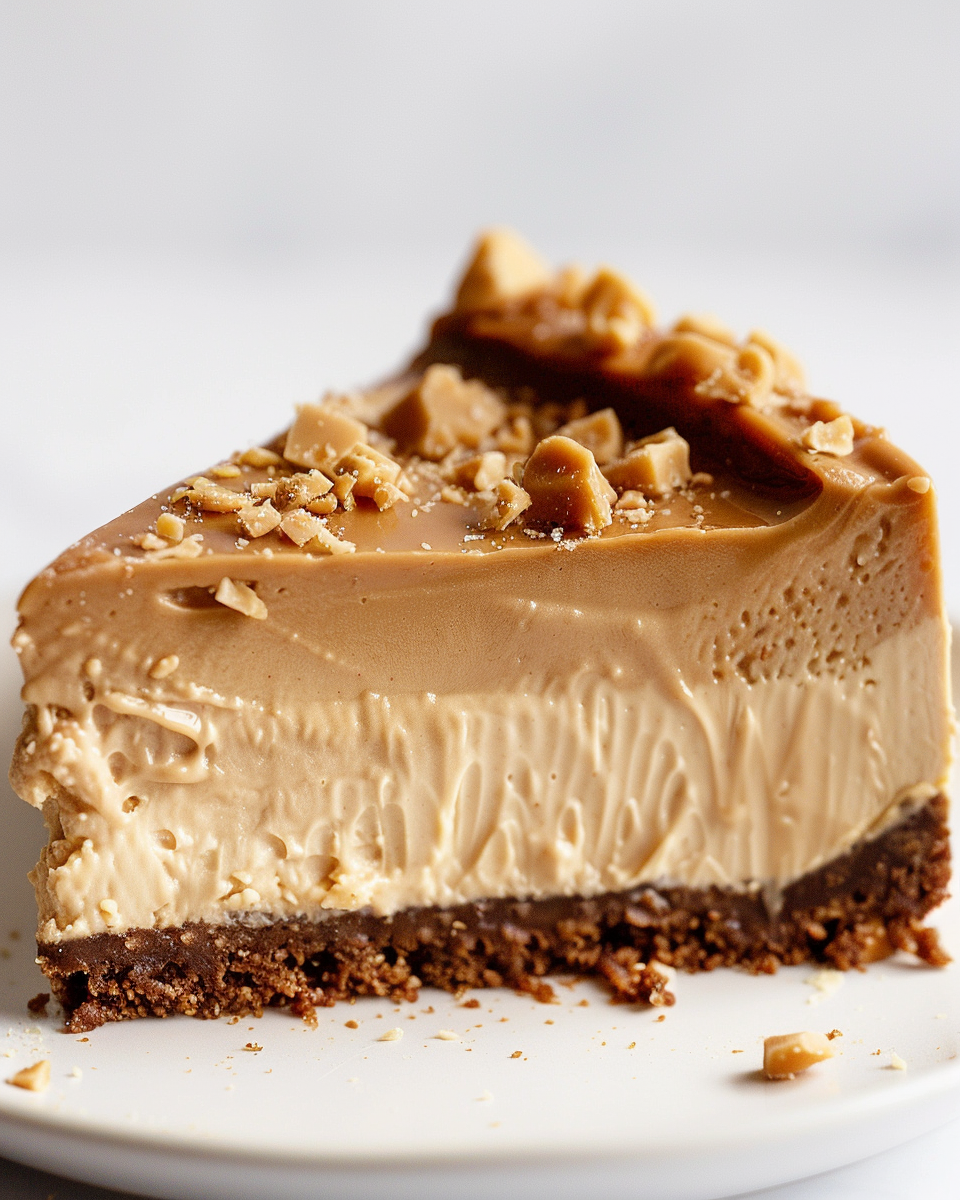Sausage gravy, a delectable blend of creamy sauce and savory sausage, has been a breakfast favorite for decades. Its rich texture and mouth-watering aroma make it a must-have on every breakfast table. Let’s dive deep into the world of this beloved dish.
The History of Sausage Gravy
The origins of sausage gravy can be traced back to the Southern United States, where it was a staple for many hard-working families. Its hearty nature provided the energy needed for a long day’s work.
Origins of the Dish
The dish’s roots lie in the Southern kitchens, where cooks combined simple ingredients to create filling meals. Sausage gravy was born out of necessity, using readily available ingredients to maximize flavor.
Popularity Across Regions
While it began in the South, the love for sausage gravy quickly spread across the country. Today, it’s cherished by many, from the East Coast to the West.
Essential Ingredients for Sausage Gravy Recipe
Sausage gravy is a classic dish that’s both hearty and comforting. To make this delicious gravy, you’ll need a combination of staple ingredients that come together to create its signature creamy texture and savory flavor. Here are the essential ingredients for a traditional sausage gravy recipe:
Sausage:
The star of the dish, sausage provides the savory base for the gravy. You can choose between mild or spicy sausage based on your preference. Typically, ground pork sausage is used, but you can also opt for turkey or chicken sausage for a leaner option.
All-Purpose Flour:
This acts as a thickening agent, giving the gravy its creamy consistency. The flour is combined with the rendered fat from the sausage to create a roux, which forms the base of the gravy.
Milk:
Whole milk is traditionally used to give the gravy its rich and creamy texture. However, if you’re looking for a lighter version, you can use 2% milk. For a dairy-free alternative, almond or oat milk can be used, though the flavor and consistency might vary slightly.
Butter or Cooking Oil:
A small amount of butter or oil can be used to cook the sausage, especially if it’s lean and doesn’t render much fat.
Seasonings:
- Salt: Essential for enhancing the flavors of the dish.
- Black Pepper: Freshly ground black pepper adds a touch of heat and depth to the gravy.
- Garlic Powder (optional): For an added layer of flavor, a pinch of garlic powder can be incorporated.
- Red Pepper Flakes (optional): If you like your gravy with a kick, a sprinkle of red pepper flakes will do the trick.
Fresh Herbs(optional):
While not traditional, adding freshly chopped herbs like parsley or chives can provide a burst of color and a hint of freshness to the dish.
Water or Chicken Broth (optional):
If you find your gravy too thick, you can thin it out with a splash of water or chicken broth. This can also add an extra layer of flavor.
With these essential ingredients on hand, you’re well on your way to making a mouth-watering batch of sausage gravy. Whether you serve it over biscuits, toast, or potatoes, it’s sure to be a hit!
Step-by-Step Sausage Gravy Recipe
Sausage gravy is a beloved breakfast staple, especially when drizzled over warm, flaky biscuits. Its rich and savory flavor profile makes it a favorite for many. Here’s a simple and delicious step-by-step guide to making classic sausage gravy:
1. Gather Your Ingredients
- 1 pound of ground pork sausage (mild or spicy, based on preference)
- 1/4 cup of all-purpose flour
- 2 to 2.5 cups of whole milk (adjust based on desired consistency)
- 1 tablespoon of butter or cooking oil (optional, if the sausage is lean)
- Salt and freshly ground black pepper, to taste
- Optional: Pinch of garlic powder, red pepper flakes, or other preferred seasonings
2. Brown the Sausage
- In a large skillet or frying pan, heat the butter or oil over medium heat (if using).
- Add the ground sausage to the skillet.
- Cook the sausage, breaking it apart with a spatula or wooden spoon, until it’s fully browned and no pink remains.
3. Make the Roux
- Sprinkle the flour evenly over the cooked sausage.
- Stir well, ensuring the sausage is fully coated with the flour. Continue to cook for another 1-2 minutes. This will cook out the raw taste of the flour and form the base for your gravy.
4. Gradually Add the Milk
- Slowly pour in the milk, stirring continuously to prevent lumps from forming.
- Make sure to scrape the bottom of the skillet to incorporate any flavorful bits stuck to it.
5. Season the Gravy
- Add salt, black pepper, and any additional seasonings you prefer.
- If you’re using garlic powder or red pepper flakes, now is the time to add them.
6. Simmer and Thicken
- Reduce the heat to low and let the gravy simmer.
- Continue to stir occasionally as the gravy thickens. This should take about 5-10 minutes. If the gravy becomes too thick, you can add a splash more milk to reach your desired consistency.
7. Taste and Adjust
- Give your gravy a taste and adjust the seasonings if needed. If it needs more salt, pepper, or other spices, add them now.
8. Serve and Enjoy!
- Once the gravy has reached your preferred consistency and flavor, remove it from the heat.
- Serve it hot over freshly baked biscuits, toasted bread, or even mashed potatoes.
- Garnish with fresh herbs like chopped parsley or chives for an added touch, if desired.
And there you have it—a classic, mouth-watering sausage gravy that’s sure to be a hit at any breakfast table. Enjoy!
Variations of the Sausage Gravy Recipe
The beauty of cooking lies in its versatility and the freedom to experiment. While the classic sausage gravy recipe is undeniably delicious, there are numerous ways to tweak it to suit different palates or dietary needs. Let’s delve into some popular variations that you can try the next time you’re in the mood for a twist on this breakfast favorite.
Vegetarian Alternatives
Transitioning to a vegetarian lifestyle doesn’t mean you have to miss out on the rich flavors of sausage gravy. Instead of traditional pork or beef sausage, opt for vegetarian sausages available in the market. These are often made from soy, mushrooms, or other plant-based ingredients. When cooked right, they can mimic the texture and flavor of meat sausages quite impressively. Pair this with a vegetable broth instead of meat-based broth, and you have a delightful vegetarian version of the classic.
Spicy Sausage Gravy
For those who like an extra kick in their meals, spicy sausage gravy is the way to go. Begin with a spicy sausage variant, or add crushed red pepper flakes, diced jalapeños, or even a dash of cayenne pepper to your regular sausage mix. The heat from the spices beautifully complements the creaminess of the gravy, making it a treat for spice lovers.
Cheese-Infused Sausage Gravy
Cheese and sausage? Yes, please! For a richer and more indulgent version of the classic, try adding shredded cheese to your gravy. Cheddar, pepper jack, or even gouda can elevate the taste profile of your gravy. As the cheese melts into the hot gravy, it adds a velvety texture and a depth of flavor that’s hard to resist.
In conclusion, while the traditional sausage gravy recipe is a timeless classic, these variations offer a fresh take on an old favorite. Whether you’re catering to dietary preferences or simply in the mood to experiment, these twists on the classic are sure to impress.
Pairing Suggestions for Sausage Gravy
Sausage gravy, with its rich and creamy texture, is a versatile dish that pairs beautifully with a variety of accompaniments. Whether you’re serving it for a hearty breakfast, a brunch gathering, or even a comforting dinner, the right pairing can elevate the entire meal experience. Here are some classic and innovative pairing suggestions to complement the delectable flavors of sausage gravy:
Classic Biscuits
Perhaps the most iconic pairing, flaky and buttery biscuits serve as the perfect canvas for sausage gravy. The softness of the biscuits soaks up the gravy, creating a melt-in-your-mouth experience that’s hard to beat. Whether you prefer homemade biscuits or store-bought, this combination is a match made in culinary heaven.
Toasted Bread
For those who don’t have biscuits on hand, toasted bread slices are an excellent alternative. The crispy edges and soft centers of the toast provide a delightful contrast to the creamy gravy. Opt for whole grain, sourdough, or even rye bread for varied flavors.
Over Eggs
Elevate your breakfast game by drizzling sausage gravy over a plate of sunny-side-up or scrambled eggs. The combination of the savory gravy with the rich yolk or fluffy scrambled eggs is pure bliss. Add some sautéed spinach or roasted tomatoes on the side for a balanced meal.
Grits or Mashed Potatoes
For a Southern-inspired meal, serve your sausage gravy over a bed of creamy grits. The grainy texture of the grits combined with the smooth gravy is a delightful pairing. Alternatively, mashed potatoes, with their buttery goodness, also make a fantastic base for the gravy.
Hash Browns or Potato Pancakes
Crispy hash browns or potato pancakes offer a crunchy contrast to the smooth sausage gravy. The starchy potatoes complement the rich flavors of the gravy, making it a satisfying meal option.
Waffles or Pancakes
For a sweet and savory twist, try sausage gravy over freshly made waffles or pancakes. The sweetness of the maple syrup, combined with the savory gravy, creates a unique flavor profile that’s both surprising and delightful.
In conclusion, sausage gravy is not just a dish but an experience. The right pairing can transform it from a simple meal to a gastronomic delight. Whether you stick to the classics or venture out with innovative combinations, the possibilities are endless. Enjoy your culinary journey with these pairing suggestions!
Nutritional Information for Sausage Gravy
Sausage gravy is a hearty and indulgent dish, and while it’s not typically considered a health food, it does offer some nutritional benefits when consumed in moderation. Here’s a general breakdown of the nutritional content for a standard serving of sausage gravy (about 1/2 cup):
Calories:
Approximately 250-300 calories. The majority of the calories come from the fat in the sausage and the milk.
Protein:
Around 8-12 grams. The sausage is the primary source of protein in the dish.
Total Fat:
18-22 grams. This includes:
- Saturated Fat: 6-8 grams, mainly from the sausage and milk.
- Trans Fat: 0 grams.
- Cholesterol: 40-50 mg, primarily from the sausage.
Carbohydrates:
10-15 grams. The flour used to thicken the gravy contributes to the carbohydrate content.
- Dietary Fiber: Less than 1 gram.
- Sugars: 3-5 grams, naturally occurring in the milk.
Sodium:
500-700 mg. The sodium content can vary based on the type of sausage used and any added salt.
Vitamins and Minerals:
- Calcium: A good source due to the milk, providing about 10-15% of the daily recommended intake.
- Iron: Provides around 5% of the daily recommended intake.
- Vitamin D: Present in small amounts if using fortified milk.
- Potassium: Around 200-300 mg, with contributions from both the sausage and milk.
Other Considerations:
- If you opt for leaner meats like turkey sausage, the fat and calorie content will be lower.
- Using alternative milk options, like almond or oat milk, can alter the nutritional profile.
- To reduce sodium, consider using low-sodium sausage or reducing added salt.
Note: The above values are approximate and can vary based on specific ingredients used and portion sizes. For precise nutritional information, it’s best to consult a nutritionist or use a detailed nutritional calculator with the exact ingredients you’re using.
Storing and Reheating Tips for Sausage Gravy
Sausage gravy is a delightful dish that many love to indulge in. However, if you’ve made a large batch or have leftovers, it’s essential to store and reheat it correctly to maintain its flavor and consistency. Here are some practical tips to ensure your sausage gravy remains as delicious as when it was first made:
Refrigeration Guidelines
- Cooling Before Storing: Before placing the sausage gravy in the refrigerator, allow it to cool to room temperature. This prevents condensation, which can affect the texture of the gravy.
- Airtight Containers: Transfer the cooled gravy into an airtight container. This helps in preserving its flavor and prevents it from absorbing odors from other foods in the refrigerator.
- Shelf Life: Properly stored sausage gravy can last in the refrigerator for up to 3-4 days. Always check for signs of spoilage, such as an off smell or mold, before consuming.
Freezing Sausage Gravy
- Portioning: If you plan to freeze the gravy, consider portioning it into individual servings. This way, you can thaw and reheat only the amount you need.
- Freezer Bags: Use heavy-duty freezer bags to store the gravy. Ensure you remove as much air as possible before sealing to prevent freezer burn.
- Label and Date: Always label the bags with the contents and the date of freezing. Sausage gravy can be stored in the freezer for up to 2-3 months.
Best Methods for Reheating
- Thawing: If frozen, it’s best to thaw the sausage gravy in the refrigerator overnight before reheating.
- Stovetop Reheating: The stovetop is the most recommended method for reheating sausage gravy. Pour the gravy into a saucepan and heat over low to medium heat, stirring occasionally. If the gravy has thickened too much during storage, you can add a splash of milk to bring it back to the desired consistency.
- Microwave Reheating: If you’re short on time, you can reheat the gravy in the microwave. Transfer it to a microwave-safe dish, cover with a lid or microwave-safe plastic wrap, and heat in short intervals, stirring in between to ensure even heating.
- Avoid Overheating: Be cautious not to overheat the gravy, as this can cause it to separate or become too thick. Gentle and gradual reheating is the key.
In conclusion, with proper storage and reheating techniques, you can enjoy your sausage gravy over multiple meals without compromising on its taste or texture. These tips ensure that every bite is as delightful as the first!
Common Mistakes to Avoid When Making Sausage Gravy
Making sausage gravy might seem straightforward, but there are several pitfalls that can turn this creamy delight into a less-than-perfect dish. Here are some common mistakes to watch out for and tips on how to avoid them:
1. Overcooking the Sausage:
- Mistake: Browning the sausage too much can make it tough and reduce its juiciness.
- Solution: Cook the sausage just until it’s no longer pink, breaking it into crumbles as it cooks.
2. Using the Wrong Ratio of Flour to Fat:
- Mistake: Adding too much or too little flour can result in a gravy that’s either too thick or too thin.
- Solution: Aim for a roughly equal ratio of fat to flour when making your roux. Adjust as needed based on the fat content of your sausage.
3. Adding Milk All at Once:
- Mistake: Pouring in all the milk simultaneously can lead to lumpy gravy.
- Solution: Gradually add the milk while continuously stirring to ensure a smooth consistency.
4. High Heat While Simmering:
- Mistake: Cooking the gravy on high heat can cause it to burn or form a skin on top.
- Solution: Once you’ve added the milk, reduce the heat to low and let the gravy simmer gently.
5. Underseasoning:
- Mistake: Not adding enough salt or seasonings can result in a bland gravy.
- Solution: Taste as you go and adjust the seasonings accordingly. Remember, you can always add more, but you can’t take it out.
6. Not Adjusting for Consistency:
- Mistake: Leaving the gravy too thick or too thin.
- Solution: If the gravy is too thick, add a splash of milk to thin it out. If it’s too thin, let it simmer a bit longer to reduce and thicken.
7. Using Low-Fat Ingredients:
- Mistake: Opting for low-fat sausages or milk can compromise the rich flavor and texture of the gravy.
- Solution: While health considerations are essential, if you’re aiming for a classic sausage gravy taste, use whole milk and regular sausage.
8. Rushing the Process:
- Mistake: Trying to speed up the cooking process can lead to unevenly cooked sausage and improperly thickened gravy.
- Solution: Take your time, especially when simmering the gravy, to allow the flavors to meld and the consistency to be just right.
9. Not Letting the Gravy Rest:
- Mistake: Serving the gravy immediately after cooking.
- Solution: Let the gravy sit for a few minutes after cooking. This allows it to thicken up slightly and the flavors to settle.
By being aware of these common mistakes and knowing how to avoid them, you’ll be on your way to making a flawless batch of sausage gravy every time!
FAQs
Is KFC gravy pork?
No, KFC gravy is not made from pork. KFC’s gravy typically consists of flavors derived from chicken fat, roasted chicken, and various seasonings. However, recipes and ingredients can vary by location, so it’s always a good idea to check with your local KFC or review their nutritional information if you have specific dietary concerns.
Why put powdered milk in sausage?
Powdered milk is sometimes added to sausage recipes to act as a binder and filler. It helps in retaining moisture, ensuring the sausage remains juicy during the cooking process. Additionally, powdered milk can enhance the Maillard reaction, which is responsible for the browning of the meat, leading to a richer flavor and color in the finished product.
Is gravy better with flour or cornstarch?
Both flour and cornstarch are effective thickeners, but they have different properties:
- Flour: Produces a gravy with a slightly opaque appearance and a more robust, hearty flavor. It’s best used when making a roux, where it’s combined with fat before adding the liquid.
- Cornstarch: Results in a clearer, glossier gravy with a silkier texture. It’s gluten-free, making it a good choice for those with gluten sensitivities. When using cornstarch, it’s typically mixed with a cold liquid to create a slurry before being added to the hot liquid.
The choice between flour and cornstarch often comes down to personal preference and the desired texture and appearance of the gravy.
What is sausage gravy made of?
Sausage gravy is a classic Southern dish made primarily of ground sausage, milk, flour, and seasonings. The basic process involves browning the sausage, creating a roux with the rendered fat and flour, and then gradually adding milk and seasonings. The mixture is simmered until it reaches a creamy consistency. Variations might include different types of sausage, additional spices, or other flavor enhancers.
How do you fix bland sausage gravy?
If your sausage gravy tastes bland, there are several ways to enhance its flavor:
- Seasonings: Add more salt and freshly ground black pepper. Remember to add in small increments and taste as you go.
- Herbs: Fresh herbs like sage, thyme, or rosemary can elevate the flavor profile.
- Spices: A pinch of cayenne pepper or red pepper flakes can add a spicy kick.
- Garlic: Minced garlic or garlic powder can introduce a deeper flavor.
- Broth: Instead of adding more salt, consider mixing in a splash of chicken or vegetable broth.
- Butter: A knob of butter can add richness and depth to the gravy.
Conclusion
Sausage gravy, with its rich and creamy texture, stands as a testament to the beauty of combining simple ingredients to create a dish that’s both comforting and flavorful. Whether you’re a seasoned chef or someone just starting out in the kitchen, understanding the nuances of this classic dish, from its ingredients to common questions surrounding it, can help you perfect your own version. As with many recipes, the key lies in the balance of flavors and the quality of ingredients. So, the next time you’re looking to whip up a hearty breakfast or a comforting dinner side, remember the tips and insights shared here, and you’ll be on your way to creating a sausage gravy that’s sure to impress.









